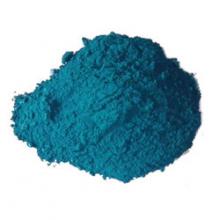Submitted by ivars211 on
Cu(CH,3COO)2
It has recently been used in some blue star formulas as a replacement for Paris green. Although it is sometimes said that the color is equally good, this remains doubtful since the acetate does not contain arsenic, which is essential in mediating the chlorine transfer to the copper.
Synthesis:
Method 1: Cu(CH,3COO)2 can be produced by the reaction between Copper (II) oxide (CuO),Copper carbonate (basic) (CuCO3), and/or Copper hydroxide (Cu(OH)2) and Acetic acid (vinegar works). Evaporate to obtain crystals. These will be contaminated with Acetic acid, so dissolve and recrystallize them in distilled water to obtain purer product.
Method 2: Dissolve copper metal in a warm Acetic acid by adding hydrogen peroxide or bubbling air through the solution. Evaporate to obtain crystals. These will be contaminated with Acetic acid, so dissolve and recrystallize them in distilled water to obtain purer product.
Method 3: Dissolve Calcium carbonate in Acetic acid to form Calcium acetate. Add this slowly to a Copper sulfate solution to precipitate insoluble Calcium sulfate, leaving Copper acetate in solution. Filter and, if you want crystals, dry.
Very hazardous in case of ingestion.Slightly hazardous in case of skin contact (permeator).


